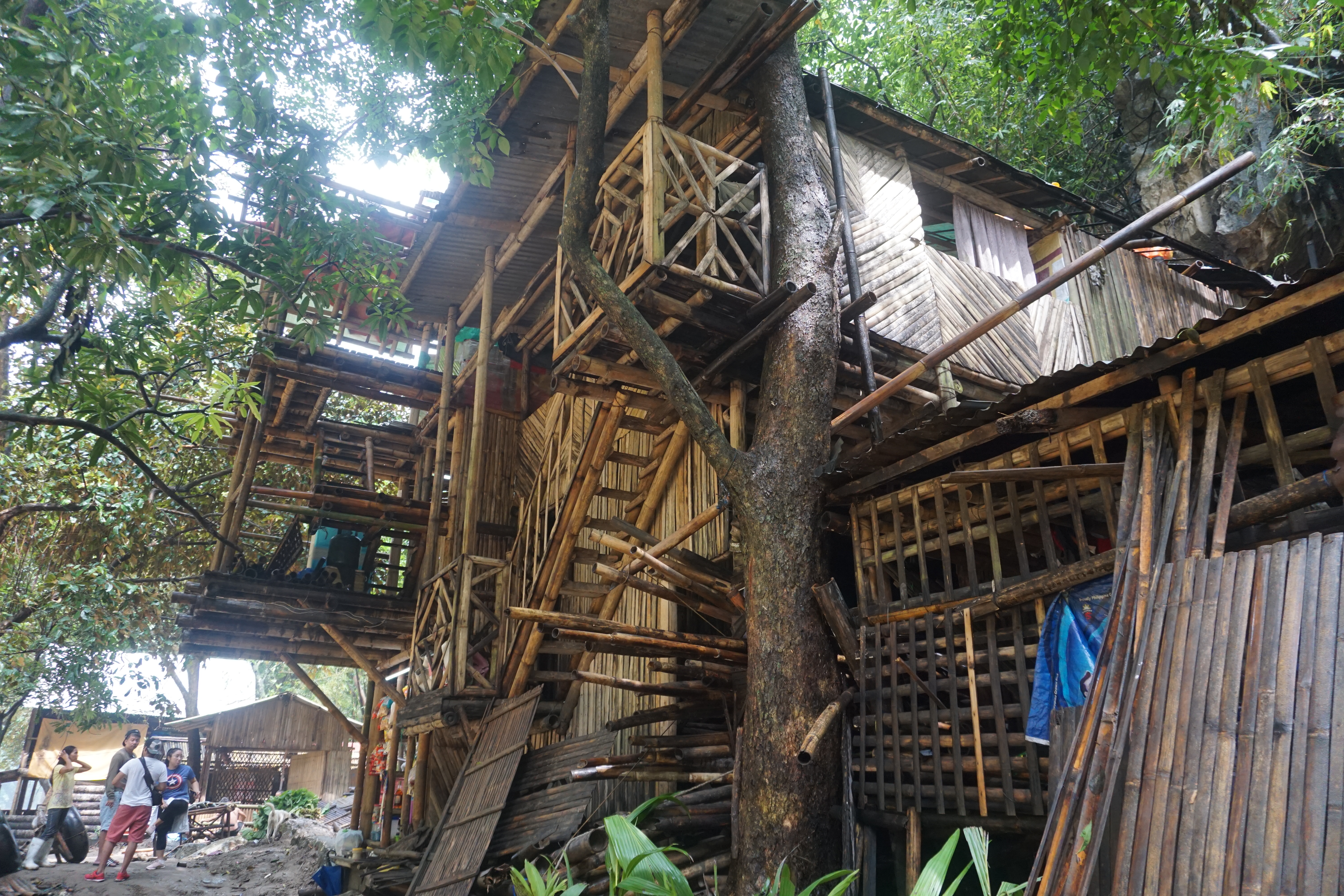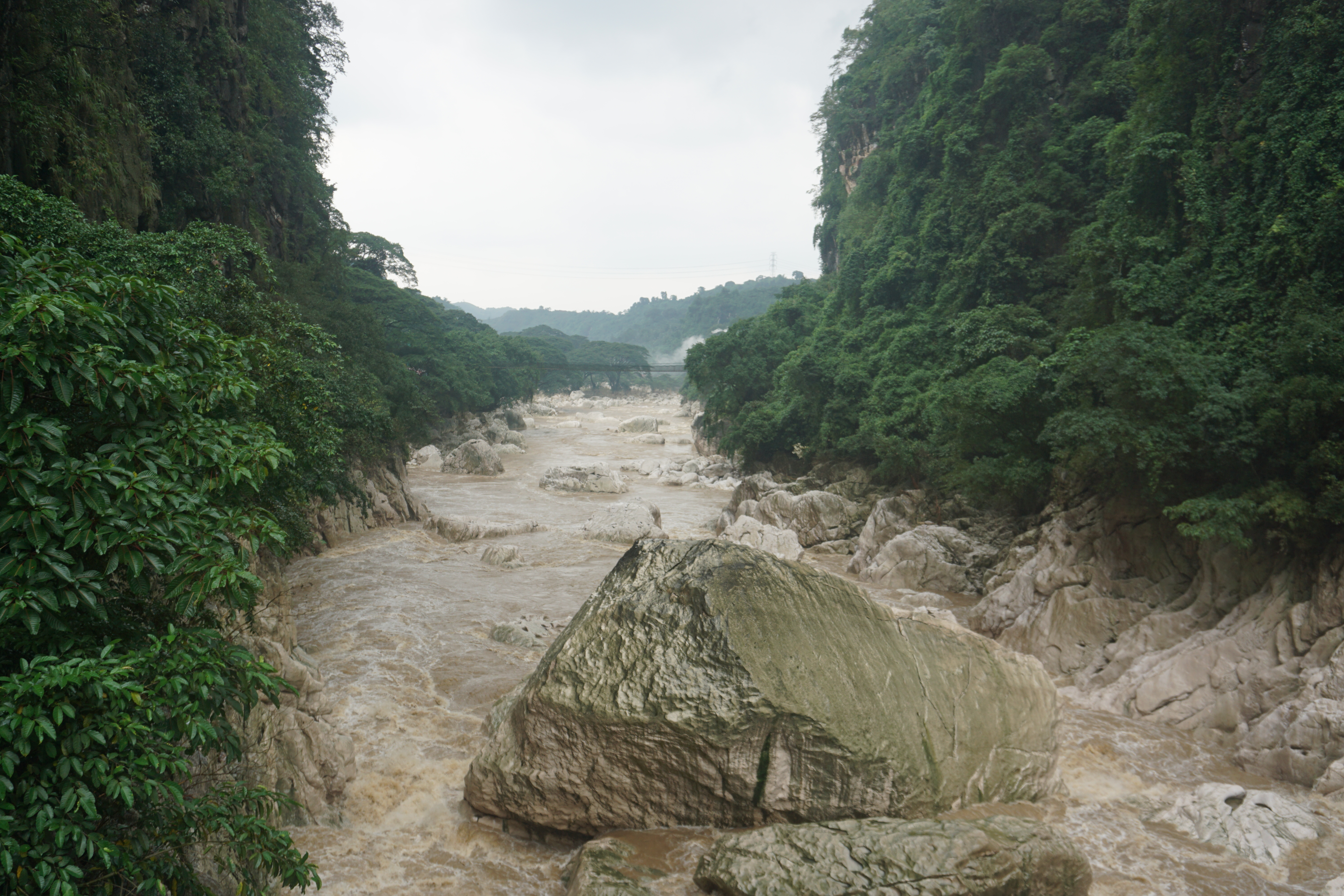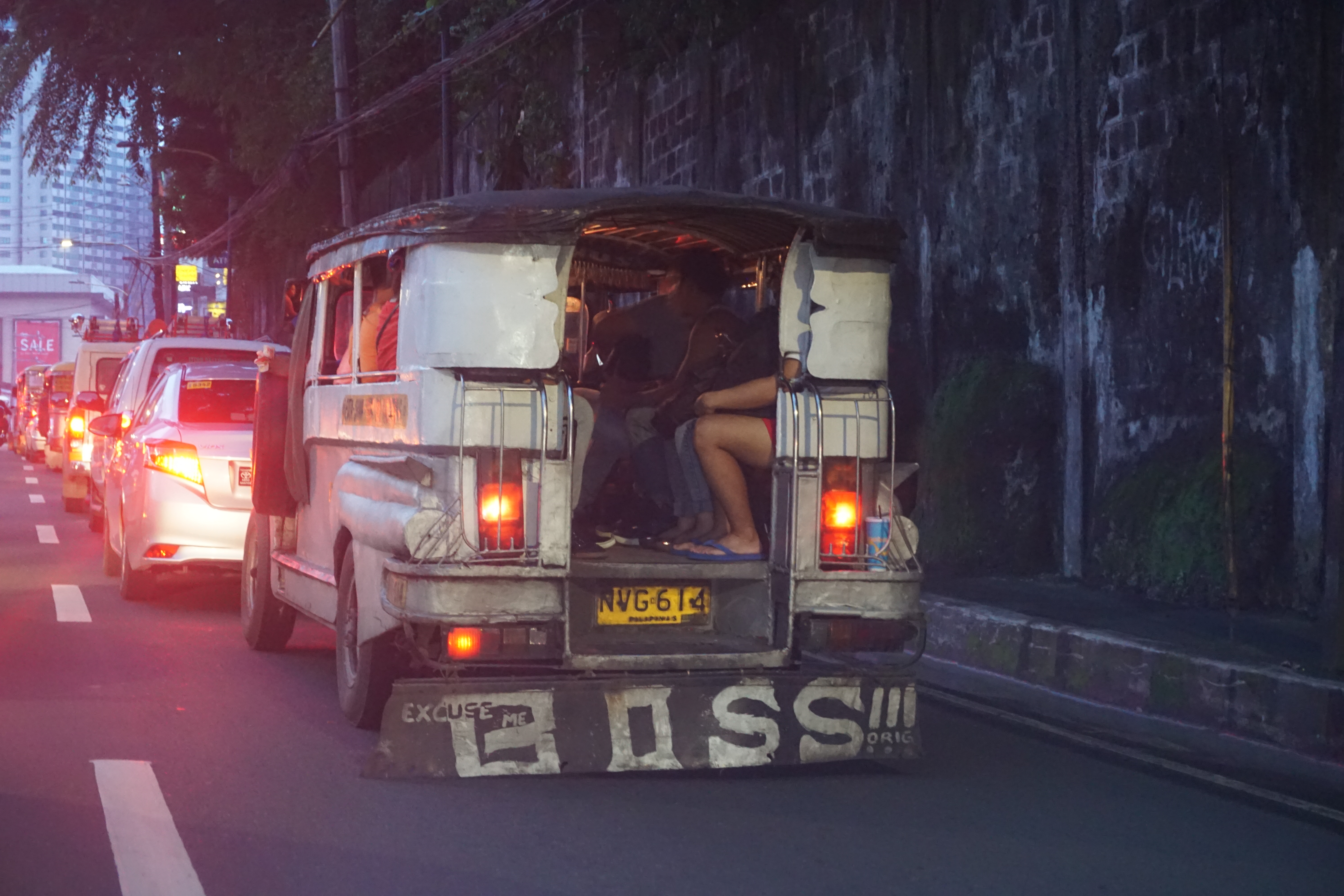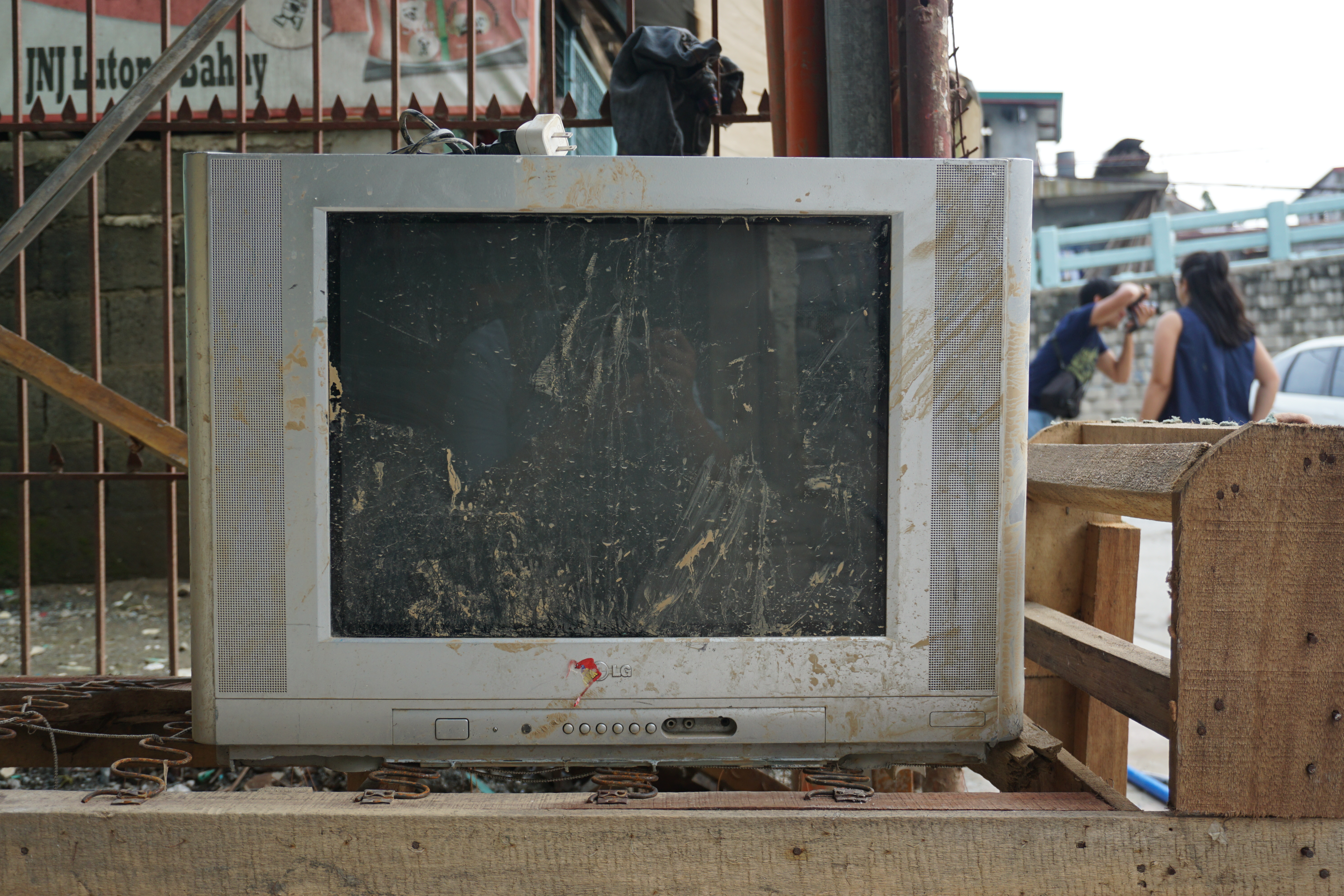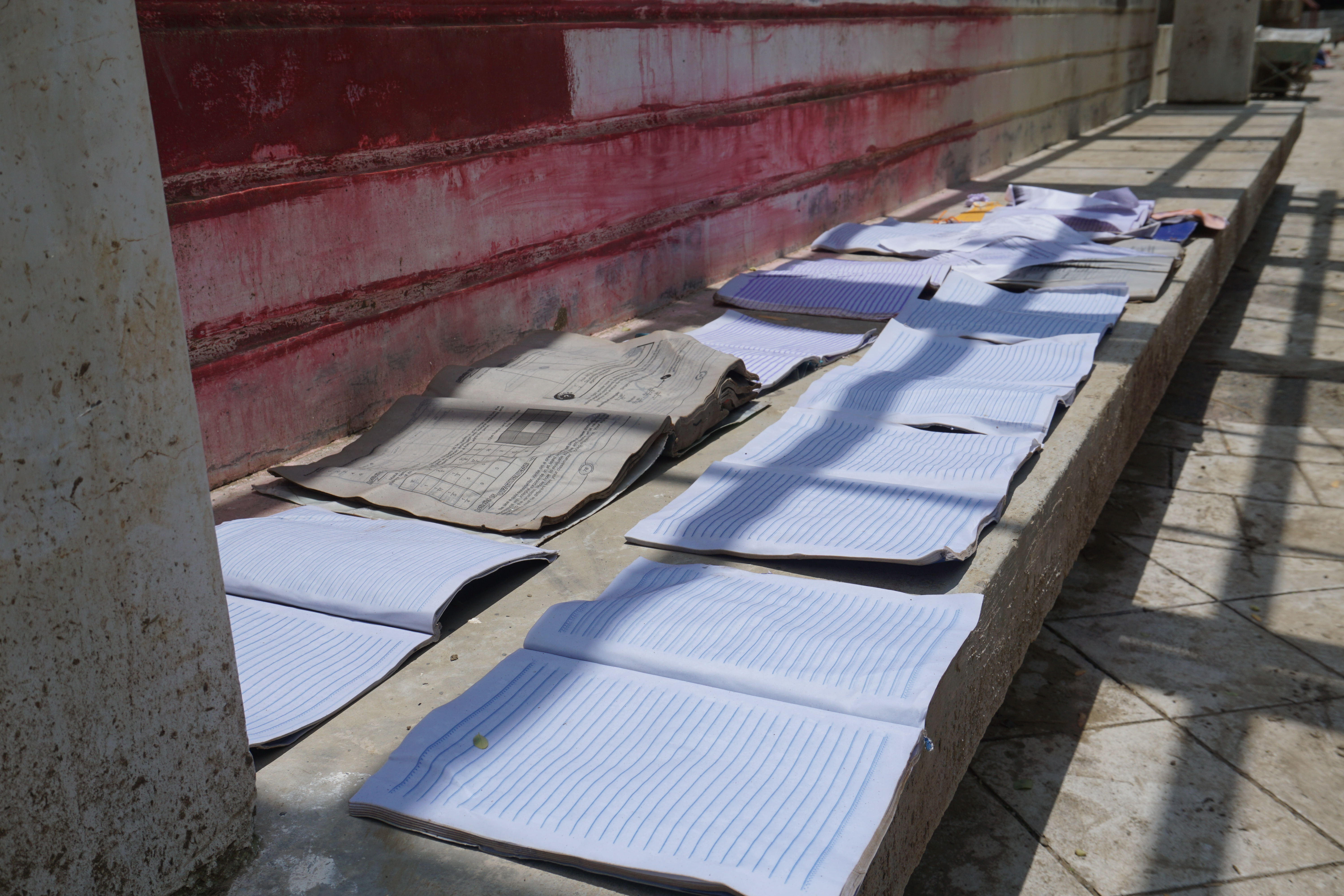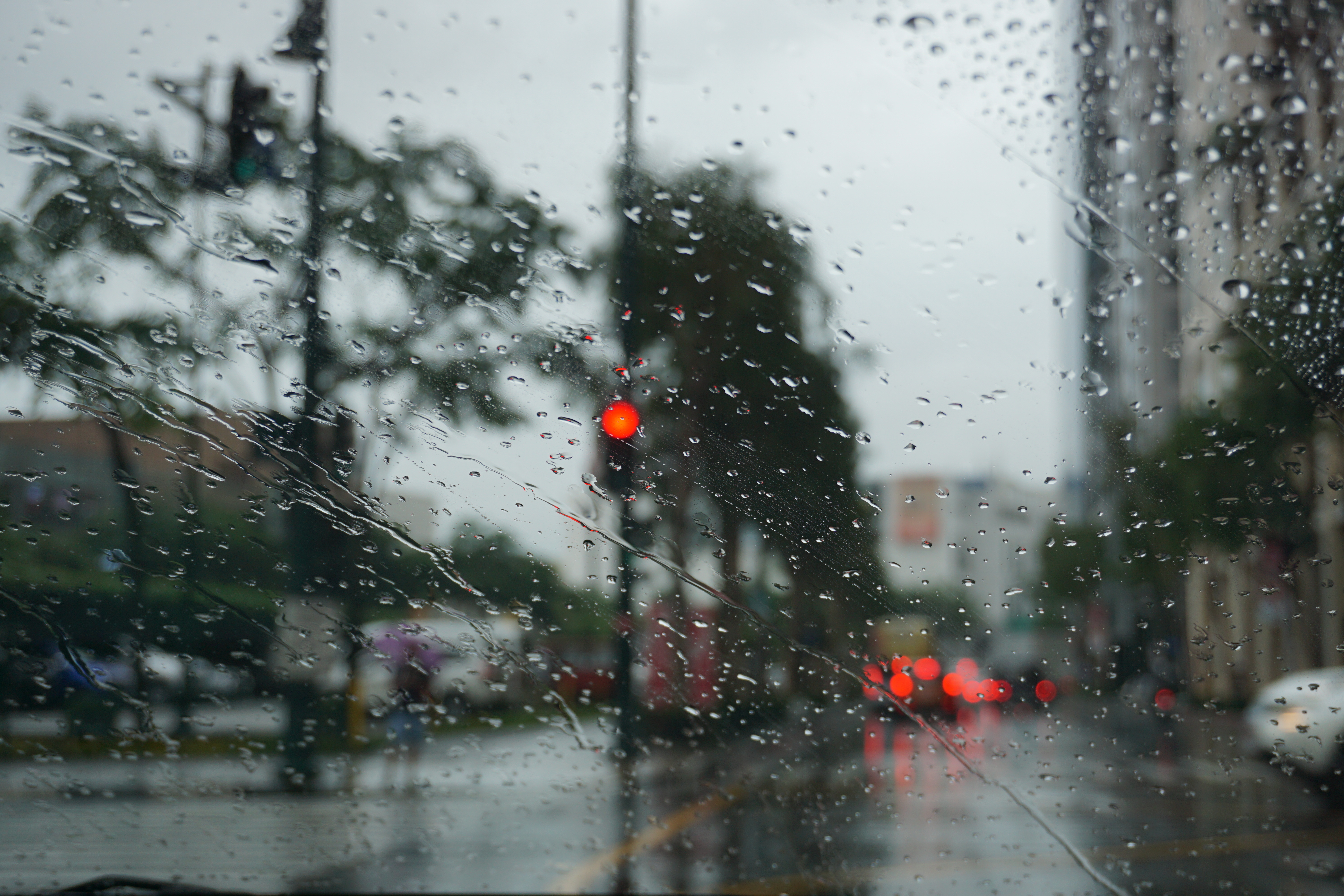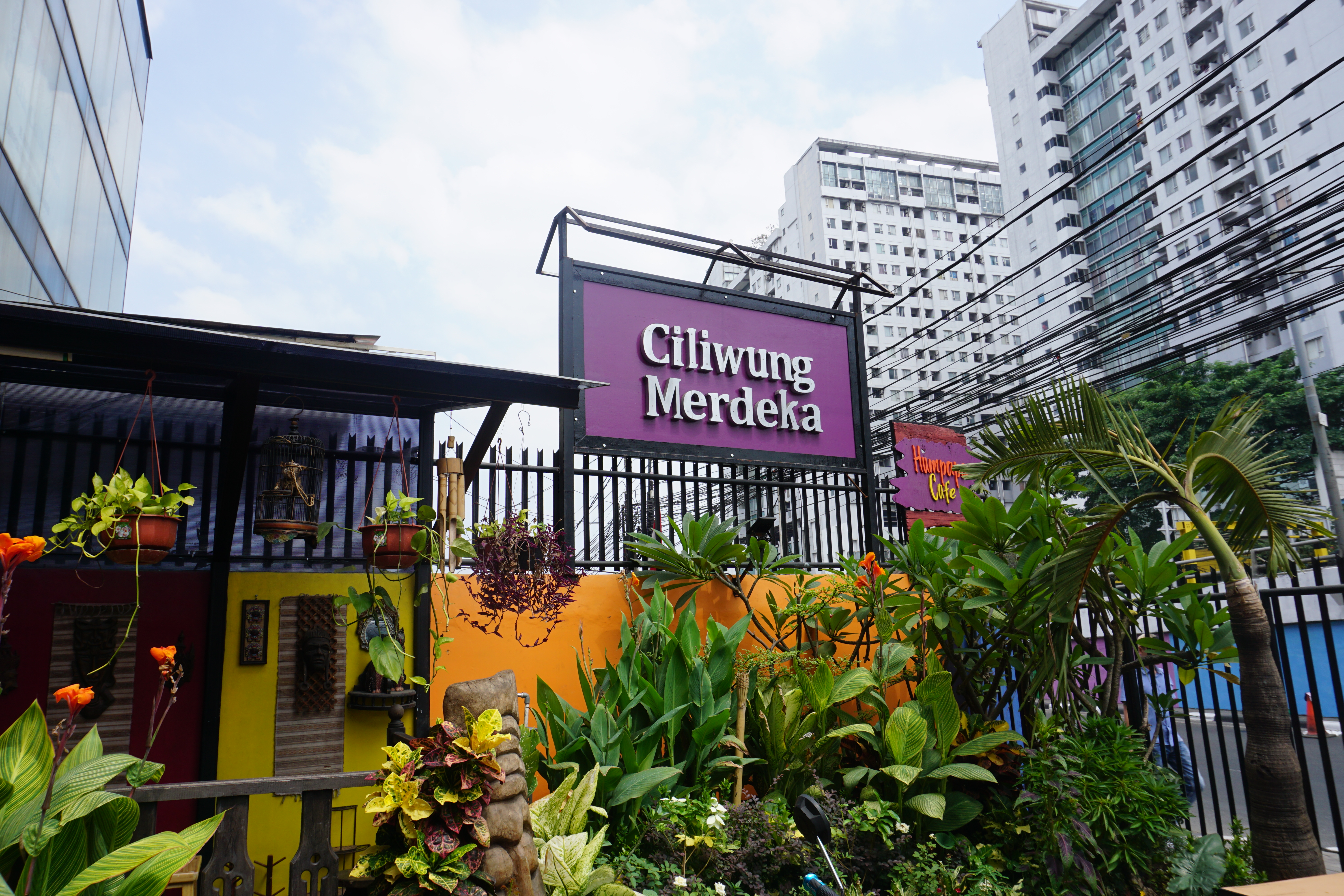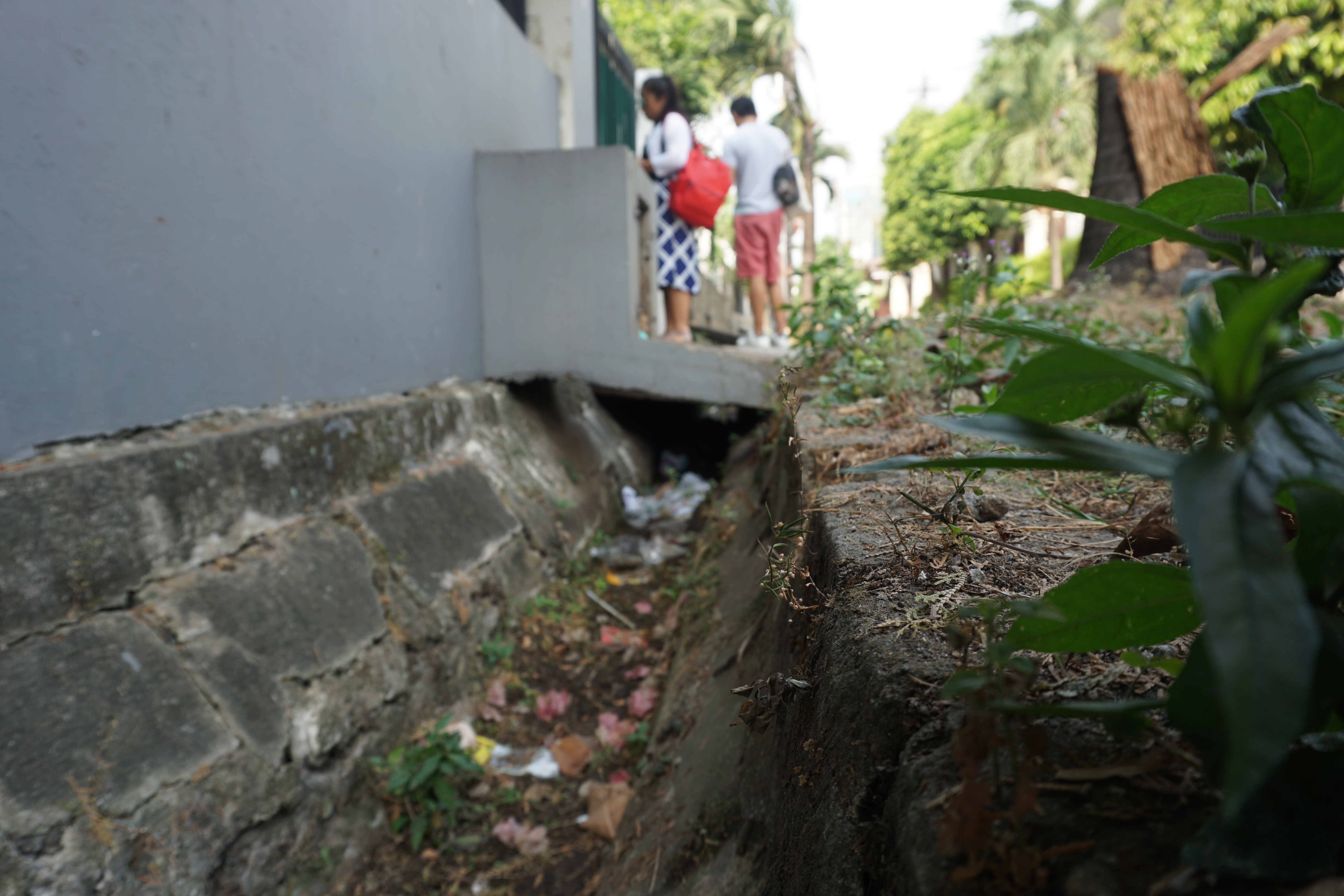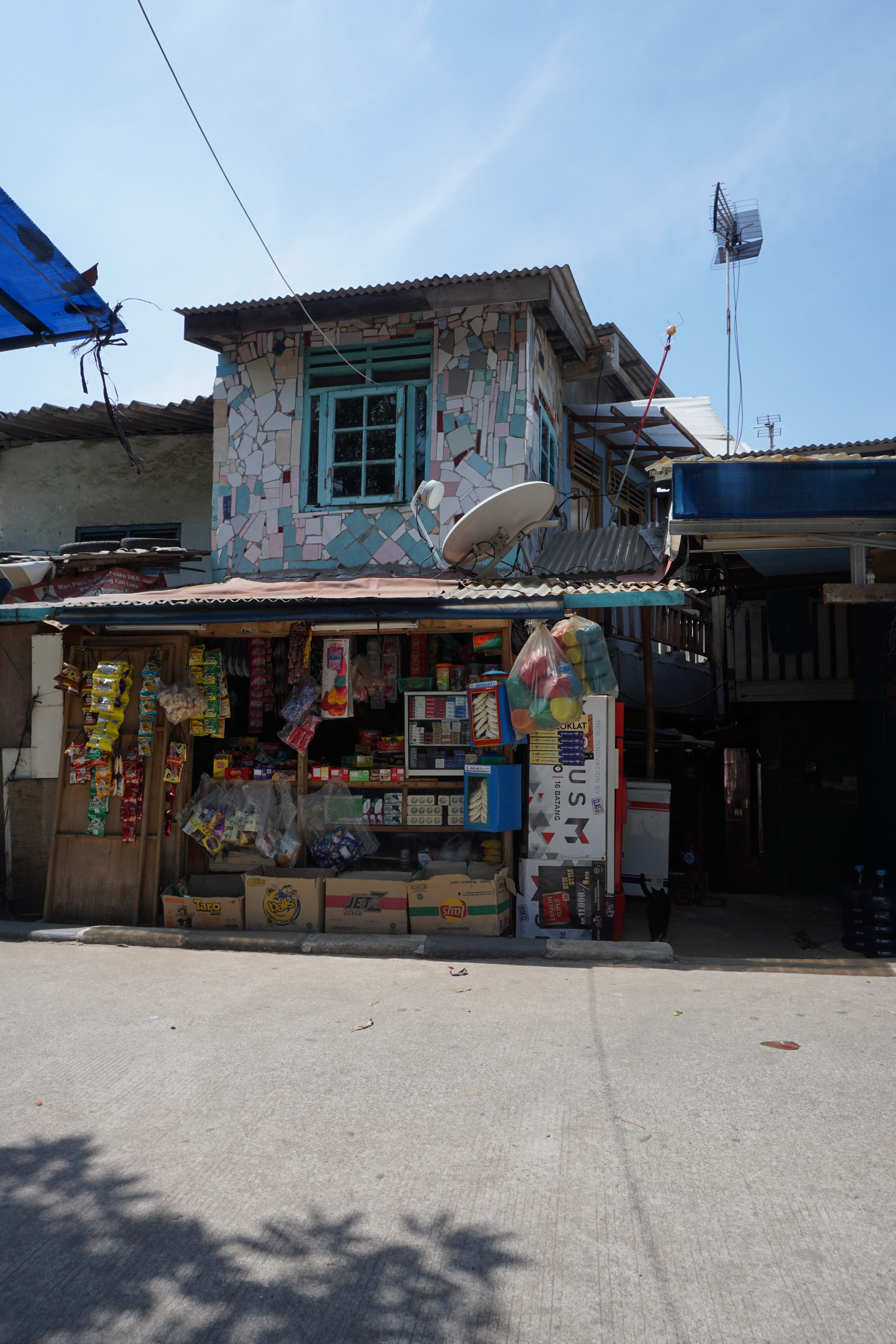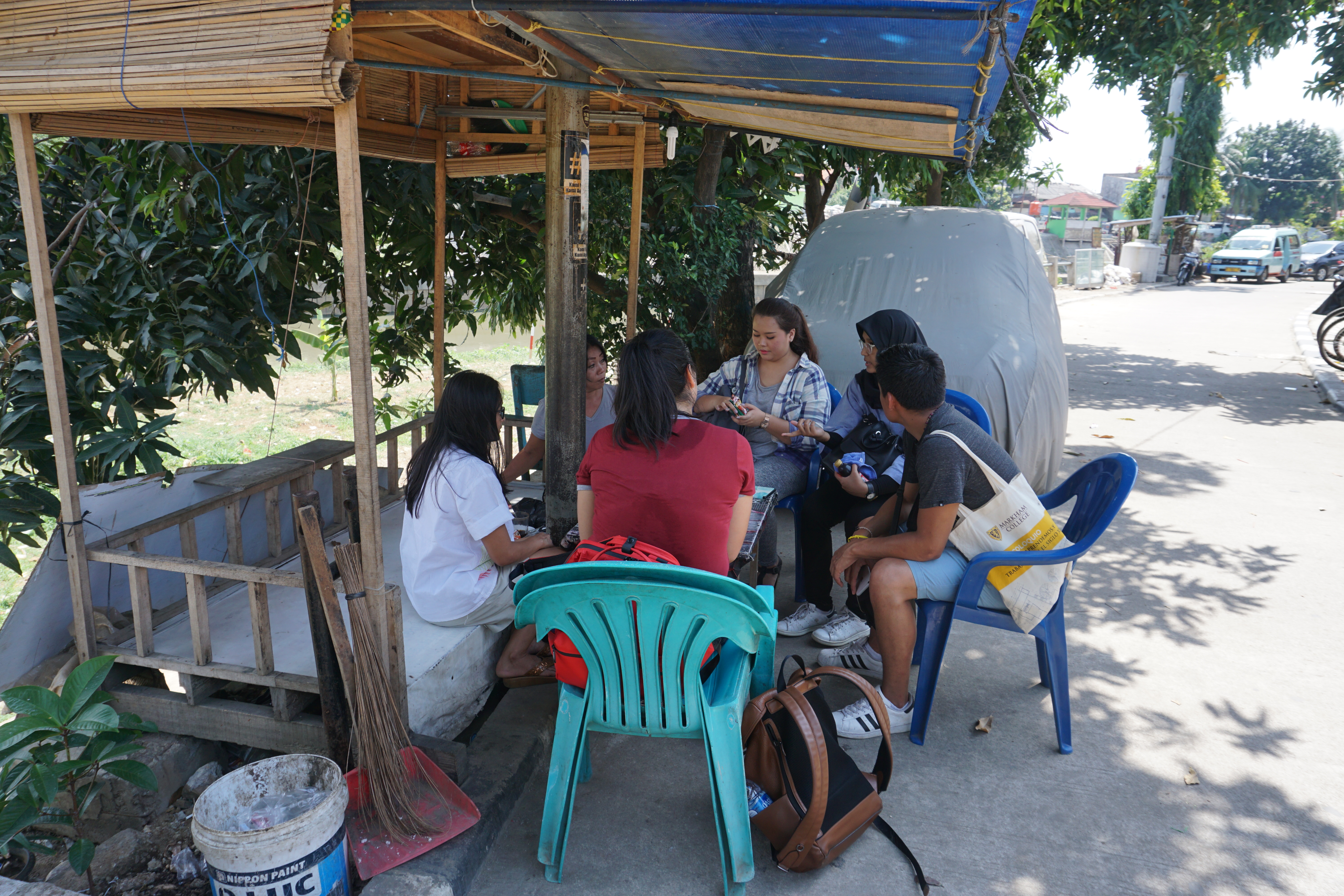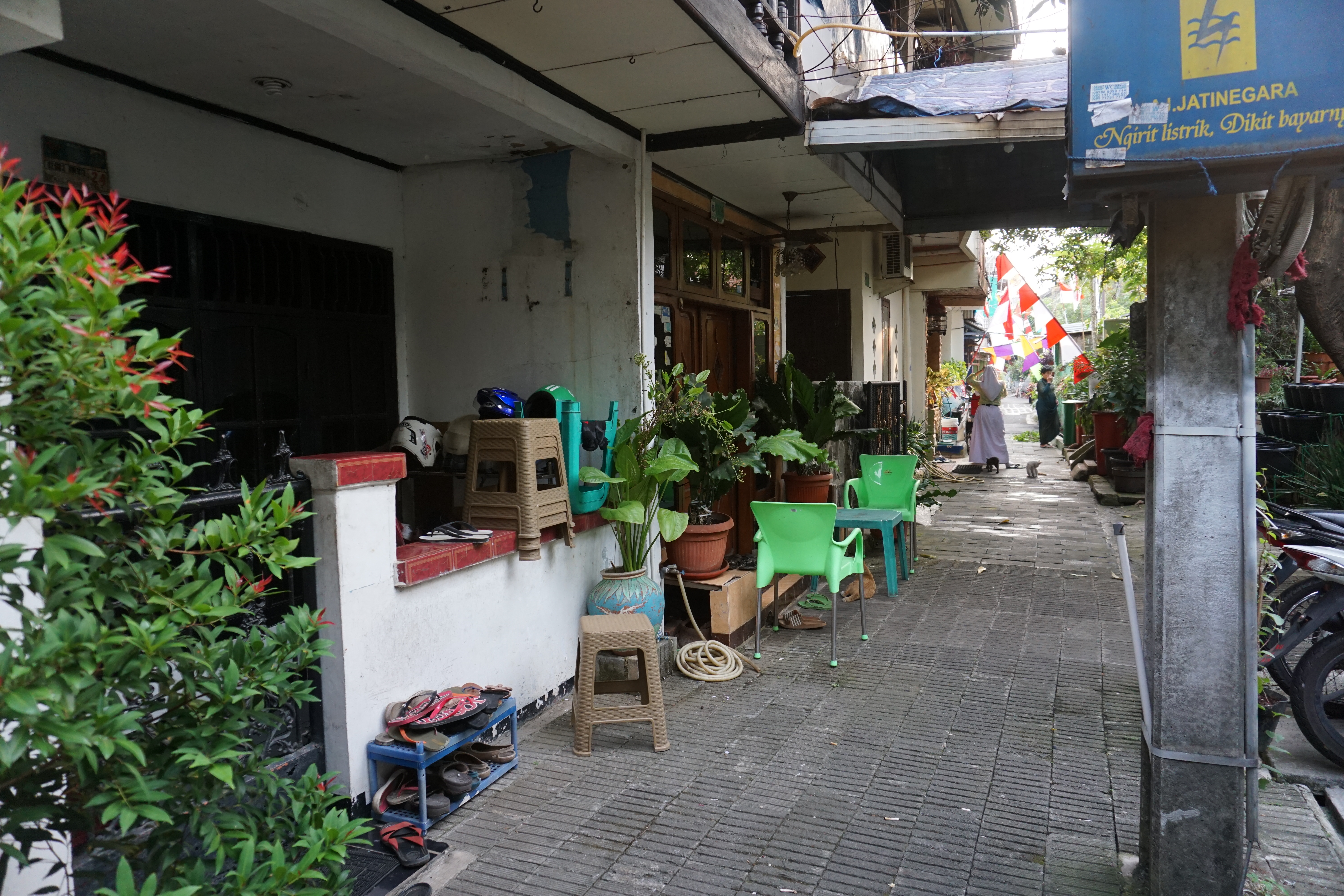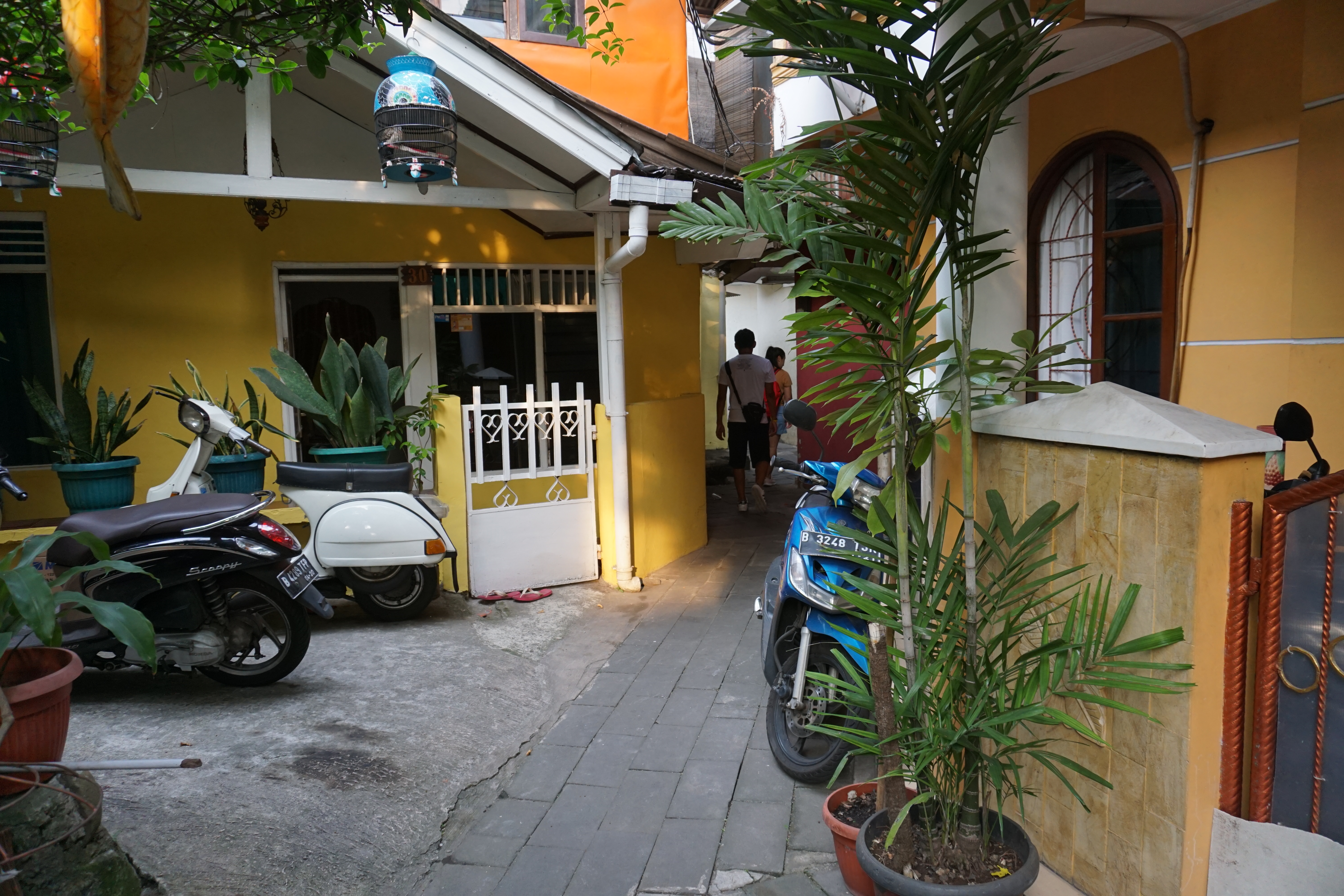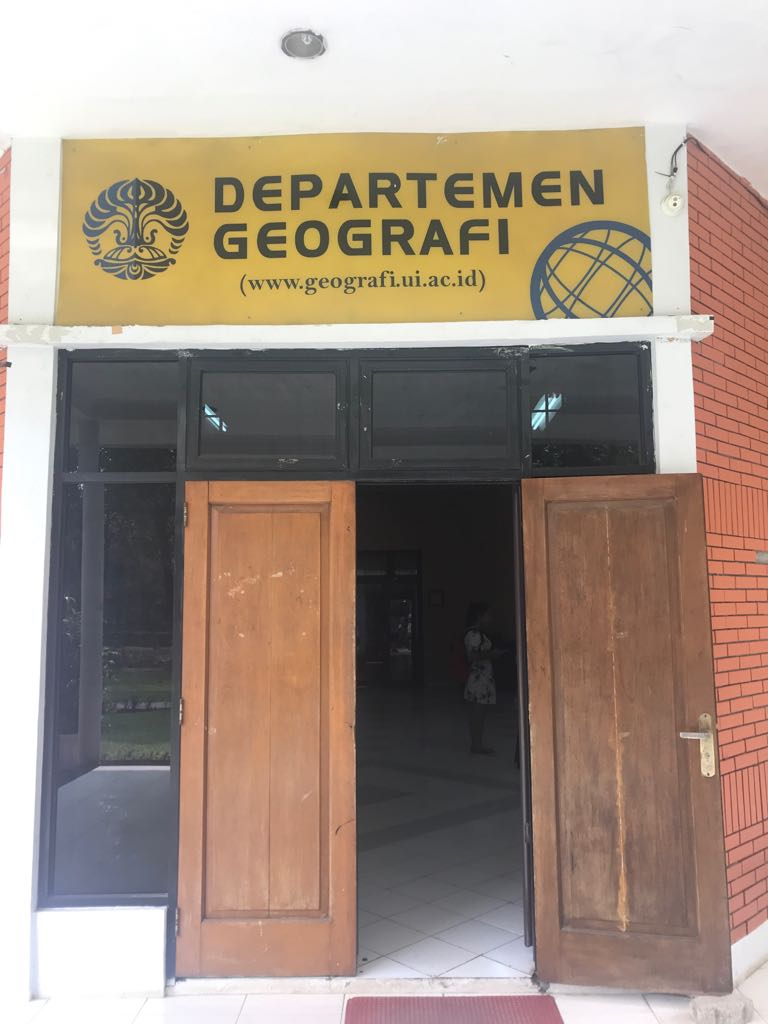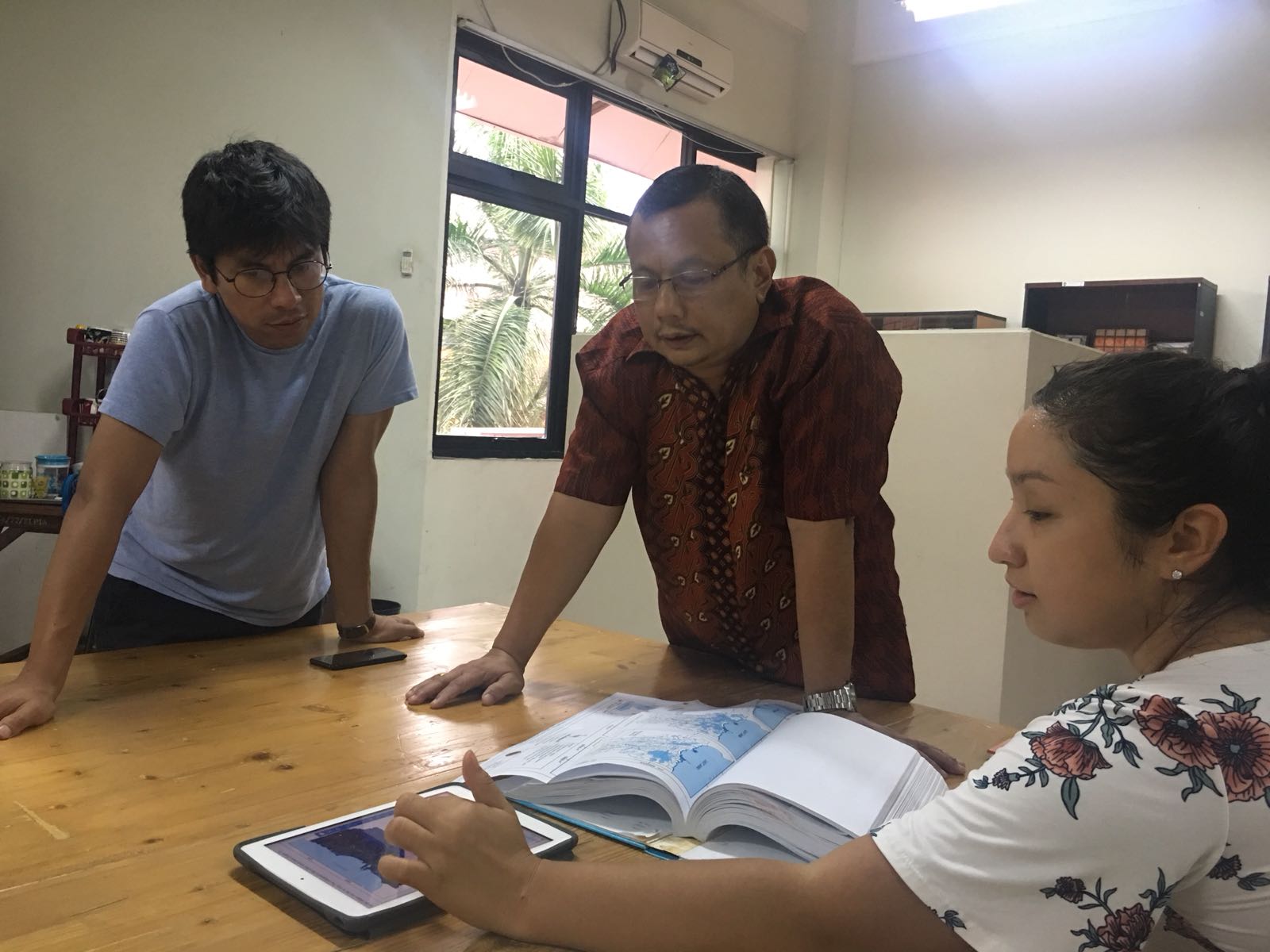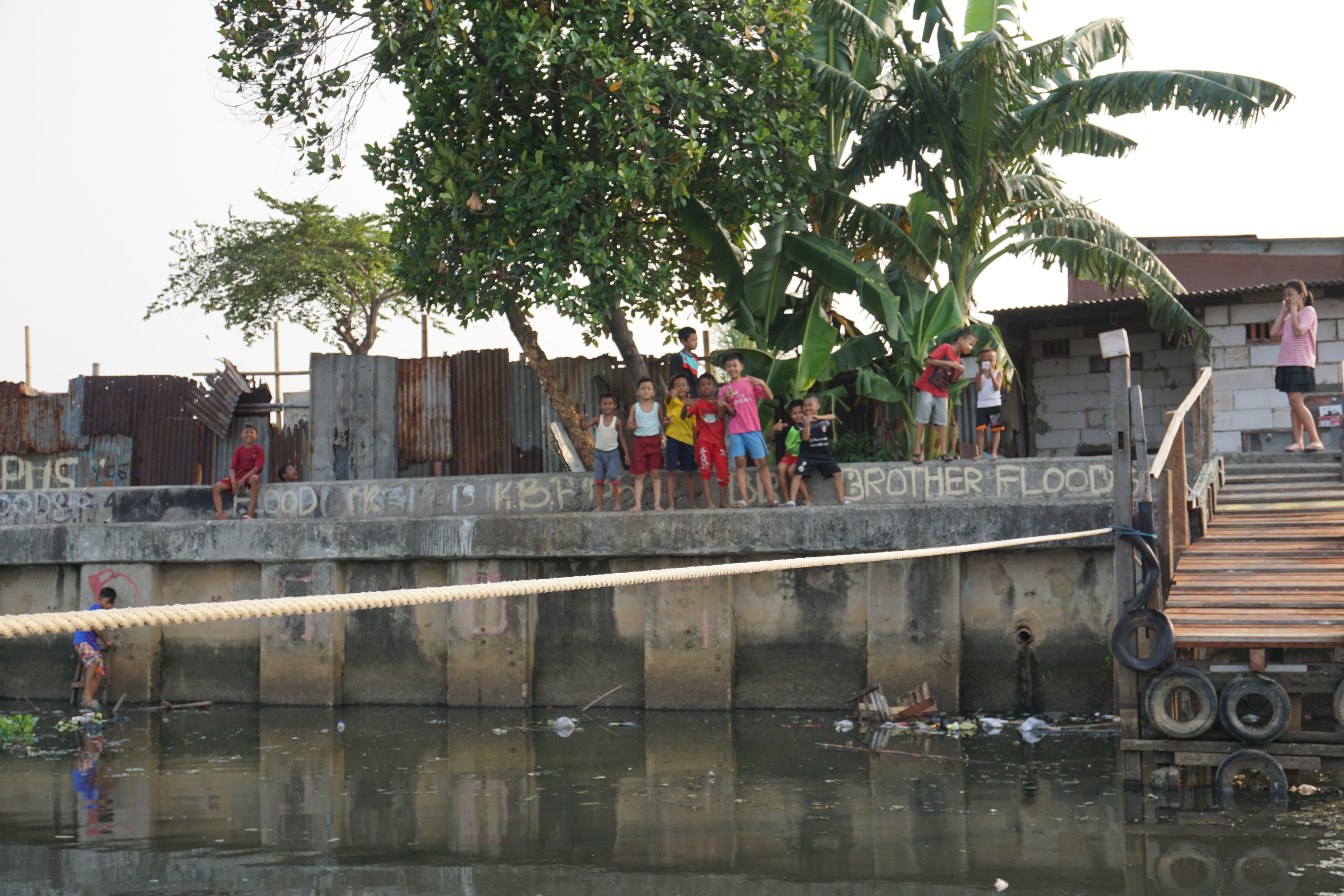I don’t even remember where I heard that of the two things to which a person could stare forever and ever, the fire burn and the water fall. Worried so much throughout this trip by the destructive effects that water can have for the daily life of entire communities, there were not many moments when we stopped to watch the water in its beauty as we did today in Wawa Dam, northeast of Metro Manila. The rural landscape that you find along the river over here is a diametrically different type of coexistence that the water has with the people than in the two cities that we have visited so far. The rocks, the waterfall, its sound, the surrounding green did nothing more than remind me of the similar places along the Vilcanota River that I used to visit with my family when I was a child. Of course, something that you don’t find there in the Andes and that is so common along the Marikina River is the use of bamboo. I will not try here any clever description of the different benefits of using bamboo in the building of houses in the edge of bodies of water, I shall leave that to the big-time expert on that, Astrid. I can only choose one of the million pictures that I took of this amazing house, that in a beautiful synthesis combines rather contradictory ideas such as strength and flexibility, space and verticality, definition and incompleteness.
Archivo por meses: agosto 2018
An unexpected friend
Though he has not yet reached the thirties, he has already a beautiful family: his wife Elaine, a lovely Italian-looking lady, and their 3 children. Elaine and him are Christian and attend to service every Thursday and Sunday in one of the many “Iglesia ni Cristo” of the city. I know that it is a stereotype but I cannot help to attribute much of his kindness to his religion, since basically every practicing Christian that I have personally known has that sort of tranquil soul when you talk to them. When he was younger he had the fortune to get to know almost all the cities that compose Metro Manila. He learned how to drive when he was only thirteen or fourteen years old and would drive her grandmother’s car all over the place. That is how he can very well explain what is going on with the floods in Navotas, Caloocan and Malabon, and also tell you why is it that there is a wall surrounding the La Mesa Watershed in the east of the metropolitan area. He recalls one of those occasions as the time when he had to spent the most time stuck in the traffic jam. He had just taken her grandmother to buy some groceries and when they entered the highway he saw that the cars in front were all stopped and, since the level of the water reached almost the knee of a person, he just had to stop the car and wait in the place for seven hours. Not being able to go anywhere, he had time to go further by walk and see the situation closely and even go to a restaurant and get some food for his grandma and him. Fortunately, he nowadays lives in a house that does not suffer that much with floods. He recalls that it was during the heavy floods of 2009 the only time that there was a moderate level of flooding at his home, but it was not of the severity that made so many people lose all their belongings in other parts of the city. He is not the most outgoing person that exists, he usually goes through some doubts when approaching a new person, but he usually manages to do it. In most of the cases, his youthful air and his kindness make people like him quite quickly. That is why it was just some minutes after we began the fare in his Grab taxi that he decided to speak to the person next to him, me: “excuse me, boss, and where do you come from?” Two days later, he had helped us in our research in Barangay Tumana as driver, intermediary, translator, security, negotiator, photographer, tour guide and, above all, local friend, and I had already gotten used to the “excuse me, boss”, “thank you, boss”, “see you tomorrow, boss”.
What to do next?
We first heard about Barangay Tumana (Marikina City) through the article of Nick Espina, a scholar introduced to us by Marikit Soliman, who, in turn, was introduced to me by Erlyn Rachelle, a classmate of mine that I was fortunate to meet in the GIS Institute course that I took in June. This kind of chains have explained so many of the experiences that we have had in this trip and that I have had in the recent time that sometimes I wonder if I should just try to ride my luck rather than my effort. Unfortunately, Nick, with whom we met during the weekend to talk about his paper, did not have the contact of the people leading the Barangay anymore, since there had been elections in the recent years. Despite of that, this candidate of a site made much sense to our research as a vulnerable informal settlement on the banks of a river and we chose it for our visit. Two days later, just informed by that meeting, the weekend news about the floods in the area and a small exploration over google street, we took a Grab (the equivalent to Uber in Manila) directly to the place. In Jakarta our modus operandi had been to do a first exploration of the neighborhood by ourselves and then to come back with a local person who would ease the communication and would help us conduct some information gathering technics. However, thanks to the unexpected help of our Grab driver, from the very beginning we were able to go directly to the best sources of information: we talked first with the Captain of the Barangay, the leader of a population of around sixty thousand people, a guy very pleased to talk with us while also signing some papers that were brought to him during the conversation. He was also kind enough to assign a person for coming with us in our walk around the neighborhood. The moment that the place was going through was the opposite to that of our visit to Melayu in Jakarta. Here not only we are in the rainy season, but a tropical storm had hit the area last weekend, and this Barangay is located in one of the areas with the highest risk in the whole Metro Manila. That risk materialized during the weekend and in our walk we could see the level of losses due to the overflowing of the Marikina River. Most of the houses had a giant pile of things in front, which was composed of all the belongings that they had in their first floor and could not manage to save from the water that in the majority of cases covered most of the first floor and that in the lower areas of the neighborhood reached even the top of the second floor. What to do next?
A Matter of Language
Manila has been a bit rough for me. I came with a cold that I caught back in Indonesia. In part because of having been fortunately a fairly healthy person and in part because of not paying much attention to the everyday things of life, like making the bed or cooking an egg, a cold usually takes a toll on me. It is extremely difficult for me to understand what the symptoms are or what the process of it is. How can a person tell if one has a fever or not? You are inside you, so how can you have a sense of your own temperature. It is like when the doctor asks me: Oh, you have a stomachache, tell me, what kind of ache is it? In my head that one really falls under the category of the metaphysic questions and my inability to answer would normally bring the bad humor both of the doctor and of the person going with me to the clinic. But this cold is the only suffering of this trip, hopefully to be fixed with a ton of pills that the doctor already prescribed. What is not a suffering is the life in a city like Manila that has real rain. 10 years of my life I have spent in Lima, a city where the slightest drizzle was already called a rain by the people, before them putting on a large coat as if we were in Kaliningrad. I think there is a thing with the language in this matter. Something similar to what I think my Finnish friend Timo told me once about the different names that snowing has in his native Oulu. For instance, a person like me coming from Cusco, a city where it never snows, did not know the difference between the icy snow and the snow that is perfect for making snowballs and snowmen, nor had a different name for those two kinds. The first time I heard rain (“lluvia”) referring to that drizzle in Lima it sounded very weird. I would use the word “garúa” or “llovizna” for those shy fallings of water. I would call “lluvia” a real rain like the ones that I have seen here in Manila, one that would make people use ponchos and umbrellas, and that will turn the taxis into the most valuable good for the human being. And we would call a “chaparrón” to those showers with such an intensity that you could feel the god making a true effort to throw the water ferociously to the city while making the lightning sound like a final war. Occasionally rain was combined with solid pieces of ice (“granizada”) that after a while would leave a city completely covered in white, a very different white than the one of a snowstorm, that very rarely happens to fall in Cusco. Evidently, having seen myself the rivers formed in the streets of the city take with them Ticos (small cars popular in Peru in the 2000s) with their drivers inside as if they were small boats, my view of the rain in Manila was slightly different than the one of my groupmates. It has been a moderate level of rain these first days in the city, in many moments combined with a very strong wind. A new element is that the temperature is still fairly warm, and, under the umbrella, people are wearing t-shirts or even sandals. There are not people wearing boots and raincoats. A reality that must be true here in Manila and anywhere in the world: traffic goes simply crazy and getting a taxi becomes an almost impossible task. More for us, foreigners, since we could not see any taxi available in the street and were told by the smartphone app over and over again that all the taxis were busy. It took us almost 5 extra hours to manage to get a taxi booked in the app, time that we had to spend having an early dinner and walking around the mall where we had had an interview earlier in the day. Quite an interesting first taste of the monsoon season of the Philippines.
The Second Floor City
A little more than a year ago, CONURB, the research group of the Catholic University from which I am a member back in Peru put me as the leader of one of its various projects: the creation of an application that would serve as a platform for people to know the level of risk of flooding of the area where they live or plan to live. It would show the level of risk through a traffic light, red, yellow or green, based on the reports of information uploaded by the own residents of the metropolitan area of Lima. It was one of many initiatives launched in Peru as a response to the catastrophic flooding that the coast of the country suffered in the summer of 2017. It was called “Mapa de Riesgos – CONURB” (CONURB Risk Map), uncreative name although with the intention to keep positioning the name of the group amid the community interested in urban matters. The idea was to participate in a competition of ideas launched by the Ministry of Production in order to get some funding. The process of my moving to Boston to begin the master studies among other situations put a halt to the project. Today I recalled that old application in a conversation about one of the most amazing projects I have learned about in the recent time: PetaBencana.Id. (link) a platform for crowdsourcing real time information about flooding in Jakarta. The great Astrid managed to get a meeting with a group of young people working in the development, maintenance and escalation of the platform. Nashin, Pritta and Emir explained to us with great patience the details of the functioning of the application and the facts that have made it that successful. Clever elements developed through both creativity and experience like identifying the unpredictability of the location of the flooding events in the city, the advantages of using already existing channels like twitter instead of the development of a new application or the use of automatic replies in order to use the right level of intrusiveness with the users, were examples of the several things to learn from the project of this organization. In addition, it struck me the fact that the project did not involve any patent of industrial property to “protect” any idea, maintaining itself true to the concept of openness of information (a small reminder of the uselessness of the idea of intellectual or industrial property in the 21st century world) and, on the contrary, showing a strong willingness to collaborate with similar projects in places like Mexico, Hong Kong, Saigon or, why not, Lima. Even when we asked about the topic of our research, it was amazing that in a way the same philosophy underlying the development of this platform also informed their assessment of the problem of flooding in the city of Jakarta. This idea of drawing on the knowledge already developed by people throughout the time and of accepting a coexistence instead of an antagonism of the people with the flooding episodes. The rich conversation took us to the necessity of thinking how the built environment of a place like Jakarta might need to progressively move upwards in order to make the first one or more levels of the buildings prepared for the reception of the water on a periodic basis, an idea similar to the design of the “Vertical Kampung” that earlier in the day we discussed with the people of the NGO Ciliwung Merdeka. Little by little it keeps coming the idea, so relevant for my other research about urban verticality, that Jakarta is in a path to become what in the conversation occurred to me that would be in the future a “Second Floor City”.
Turquoise
About a month ago I had the chance to visit Philadelphia for the first time. Besides the unbelievable experience of walking the epicenter of the conversations about the American Revolution in the eighteenth century, I also did a part of the hipster circuit and visited the Magic Gardens by Isaiah Zagar. The place is a big installation composed by a house, its yard and some attached buildings all decorated with inlaid work of different tones of turquoise, a mosaic at the same time chaotic and beautiful. The moment I saw this house in our second visit to Kampung Melayu I could not help to think in that visit to Philadelphia, since the second floor of this house looked like pulled out from the Magic Gardens. The owner of this house gave us an incredibly valuable time to talk in the tent that lies across her store in the edge of the embankment that separates the houses from the Ciliwung River, all of this with the language help of our great friends Zaza and Cintya. She explained to us that the building of the embankment involved a strong impulse of the government and the relocation of the people that was previously settled in the edge of the river to social housing buildings in a higher area. That is the process that gave birth to this interesting street on top of the embankment, used as a public space by the people of the area. The residents that were not relocated accommodated their houses to this new configuration and performed their own strategy. They organized in a way that allows them to move themselves and their belongings to the second floor when the level of water of the river overfloods the height of the embankment. The first floor, a functional space full of belongings that can be carried and made of materials that are easier to clean up later, and a second floor, a space for the dwelling and the most important objects, and that is also the object of the decorations.
Kampung Melayu
A couple of weeks ago I was in the final review of one of the sections of urban design and planning of the summer program of the Harvard Graduate School of Design as a guest critic. One of the observations made by another guest critic to one of the students was about the lack of a clear grid of the streets of the proposed development in South Boston. I could not help to intervene and ask a sincere question about the need of such organization of the area. Although rational, easier for people to locate themselves and easy for the city to manage it, a city with a grid pattern has in my opinion a negative component of homogeneity. One of the things I use to miss in American cities and in some European cities was those unique corners that happen in a city like Cusco that did not have that much of a rational urban planning. That small chaos of the streets of a not rationally planned city is something that came to my mind today in Kampung Melayu, a medium maturity informal settlement in the east of Jakarta, in the banks of the Ciliwung River. Unlike the settlement we visited the first day, people living in Melayu have been around this area for a long time, that is, two or three generations. Enough time for already having been able to develop a neighborhood of two or three stories houses, schools, mosques, stores, restaurants, streets, alleys and all the elements that typically define a city. What impressed me the most is how beautiful and vivacious the neighborhood was. Not only it looked like an area where people had gone out of a precarious situation, but it looked like an area where one would want to live. The lack of state-led planning disappeared in this area any shadow of a grid and yet the spontaneous pattern of life that was progressively developed here gave birth to edges like the one that is in the picture. We came by foot over the alley that is in the top picture and suddenly we run into this house that had the fortune to be in the corner and, maybe as a compensation for the less privacy, enjoyed a sort of semi-private space, that along with the varied assortment of plants gave the place a lovely sentiment of warm, only broken some steps ahead by the giant mouse that caught the eye of Astrid and made Edu run for his life.
Jakarta | University of Indonesia
As happens in the whole academic world, it is difficult to determine whether a research topic is original or one has not yet looked for sufficiently among the different authors that have studied the subject. Naturally, that is a more complex disquisition when you are working a topic about a city located thirty-eight flying hours away from your current city. That is the reason why we appreciated a lot to have made a visit to local researchers that have done conducted analysis of their own city. Dr. Mangapol is a geographer from the University of Indonesia. It took us a while to finally meet him in his office in the campus of that university because he had to leave to pay his last respects to a colleague of him that had passed away in the previous day. While waiting in the hallway of the Department of Geography we were able to observe several research projects in boards that were hanging from the walls, many of which had the topic of flooding as one of the main concerns in the geospatial analysis. Once in the meeting we were able to see the physical doctoral dissertation that originated the paper that we had read. Although much patience was needed by both parties because of our lack of knowledge of Bahasa, our conversation in English allowed us to see the methods of identification of the areas of the city prone to flooding. According to the geographic study, that propensity is correlated to the existence of certain type of landform and certain type of land use in an area. However, in order to determine which parts of those areas were prone to disaster, it had to be added the layer of density of population. The result of that analysis was the map that we will include in the research, that shows how the higher risks are associated both to the paths of the rivers and channels that go through the city and the closeness to the northern bay. The most useful outcome of the conversation has been to be able to give a technical support to that intuition that the closer you get to the sea the higher the risk of flooding is.
Jakarta | 25 Seconds
Life seems to work just like the water. It immediately takes the shape of the object where it is spilled. The liver of that life does not worry about the “could-be” unless pushed to it. The idea of “difficulties” seems to come from the knowledge of different situations, and that is something more present in the visitors than in the residents. Difficulties seem also to take shape only as time goes by and that is what you perceive by looking at these young faces. Moments after these pictures were taken, the ball of the children fell to the water. The kids wearing the jerseys of Messi, Suarez and Cristiano started screaming about their elemental instrument for playing. The couple of hours that we spent walking along or across the canal, that any of our belongings fell to the water felt like the worst thing that could happen in the world. It was a brown and dense water, slowly passing full of floating rubbish and with a subtle stink. On top of that, all the articles read and all the videos watched about the pollution of the rivers and channels of the city surrounded our heads and dramatized any interaction with the body and the soul of this water. However, the falling of the ball for the children did not appear to represent any trace of a disgrace. It was almost a part of their game. As quotidian as throwing the ball down the mountain and running after it with enthusiasm. The easiest way to retrieve the ball would have been to get it from the boat that follows the rope, but the boat had just moved to take us from one side to the other and it would not go back on time to get the ball: the ball was already moving with the current. But I heard Eduardo exclaim “Look! the kids have their own little instruments!” The kids had started disputing some bamboo sticks in order to hit the ball, possibly trying to bring it closer to the edge where some wooden stairs could be climbed down (as the kid on the left of the picture that in a matter of seconds went down to get its sandal that had also fallen to the water). Between the struggle for the sticks and the playfulness of the intent they did not manage to get the ball any closer and the current was almost taking it around that small dock where the kids had crowded together. That is when they took from who knows where a larger stick that had a rounded net on its end and handed it to one of the little girls. It was her that, between the cheers of the children, with amazing skill managed to give a couple of hits first to the water and then to the ball until it became within reach. She grabbed the ball with the net and threw it again to the dock and immediately Messi, Suarez and Cristiano kicked it to the sunken sidewalk along the canal and resumed their soccer match. When we were about to restart walking, I wondered what would have happened if the girl had not managed to grab the ball. It appeared to have been very close to slip away. Despite the naturality with which the kids interacted with the water it did not seem something usual to jump to the canal and swim. And the area of the city where we were did not seem to be one where a new ball could be easily afforded. But I looked downstream and I saw a couple of hundred meters away another dock and another rope connecting both sides of the canal. I thought that if the girl had not grabbed the ball, the kids would have immediately run to the next dock. Even though there is not a sidewalk that goes uniformly along the canal between the two docks, since it is interrupted by sporadic groups of houses that reach the edge of the water, the kids would have easily gone through the labyrinthic alleyways over which we had gotten lost when walking on the other side. There is fewer to fear about the canal than I thought. The body and soul of the water are certainly an additional player in the game of these kids. And all the things I have narrated were only 25 seconds of the everyday life of this neighborhood.
